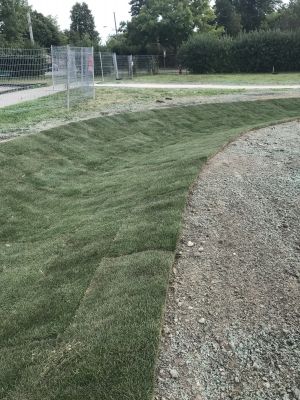Difference between revisions of "Construction: stabilizing contributing drainage area"
Jump to navigation
Jump to search
| Line 4: | Line 4: | ||
Additionally, if turf/grass is required to stabilize the contributing drainage area, installation should be done as per the grower/nursery’s specifications and standards. | Additionally, if turf/grass is required to stabilize the contributing drainage area, installation should be done as per the grower/nursery’s specifications and standards. | ||
[[File:IMG 0852-1.JPG|300px|thumb|center|Natural lawn grass installed to stabilize the contributing drainage area at the Glendale P.S. rain garden in Brampton, Ontario. (Photo source: CVC]] | |||
IMG 0852-1.JPG | Natural lawn grass installed to stabilize the contributing drainage area at the Glendale P.S. rain garden in Brampton, Ontario. | |||
Revision as of 19:10, 17 August 2022
Similar to the plant material verification and installation task shown above, any planting required to stabilize the contributing drainage area will need to meet the specifications and considerations shown above.
Additionally, if turf/grass is required to stabilize the contributing drainage area, installation should be done as per the grower/nursery’s specifications and standards.
